
As part of my role as a GMDP operations manager, I had overall responsibility for planning and delivery of the Good Manufacturing Practice (GMP) Symposium on 20 and 22 November 2018. This was my second year co-ordinating the event and I am pleased to say that, with hard work from all involved, we once again delivered a professional and well-received event.
The GMP day started with an opening presentation by Richard Andrews (Unit Manager Inspectorate Operations GMP and GDP), who provided an update for delegates on changes at the agency. These included the successful completion of our move from Victoria to Canary Wharf and the latest news on our Operational Transformation programme. Richard also provided updates on changes within the inspectorate since the last symposium. Since the last event, changes to the Inspections, Enforcement and Standards (IE&S) divisional structure have brought the Process Licensing team into the same group as the inspectorate. We have also gained 3 new GMDP inspectors (Lewis Corbett, Julie Goodliff and Shirley Stagg).
Richard then moved on to provide an update on EU Exit. The event took place between the announcement of a draft withdrawal agreement and planned votes to accept or reject that agreement in the EU and UK parliaments, so in the days and hours running up to the event, the team kept a close eye on developments to ensure this session provided up to date information on the potential outcomes of the process. This was also an opportunity to bring delegates up to speed on the agency’s preparations for deal and no-deal scenarios.
The session on Deficiency Data is a recurring theme within the GMP symposium agenda - it is always popular as it provides an opportunity to learn from where others have fallen short of expected standards. This year Ian White (GMDP inspector) presented this topic, starting by outlining our overall GMP inspection programme. In 2017 there were 320 inspections: 244 in the UK and 76 overseas, all performed by a team of around 20 full-time inspectors. This is on a par with previous years: for example, in 2016 we performed 349 inspections and in 2015 we performed 303 inspections.
The deficiency data from 2017 very much followed the same trend as that of 2016, with deficiencies against Chapter 1 making up a significant proportion of the deficiency references. Ian went into detail in the areas of Product Quality Review (PQR) and Data Integrity, sharing common deficiency themes as well as specific examples. Common PQR issues related to the scope, accuracy and timeliness of reviews, as well as whether the entire supply chain was considered and whether actions generated from the review were captured in the quality system. Common data integrity issues related to non-contemporaneous records and insufficient data integrity controls.
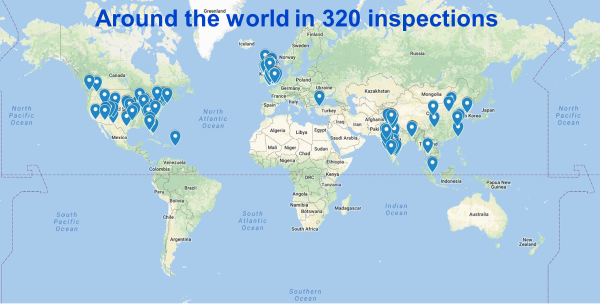
Ian also took the opportunity to outline our new and improved deficiency trending approach. As of January 2018, we have integrated this new approach into our post-inspection process, so deficiencies are now automatically logged and categorised, ready for analysis. Ian shared some examples of how we can now analyse the data and obtain much more specific information, giving a taste of what is to come at future symposia.
There was a short break for refreshments and a chance to network with other delegates before the event resumed. In the refreshment area there was also an opportunity for delegates to review Q&As from last year’s event. These were displayed on a plasma screen and on ‘TV cards’ dotted around the room. Another plasma screen displayed excerpts from recent GMP relevant blog posts published on this site.
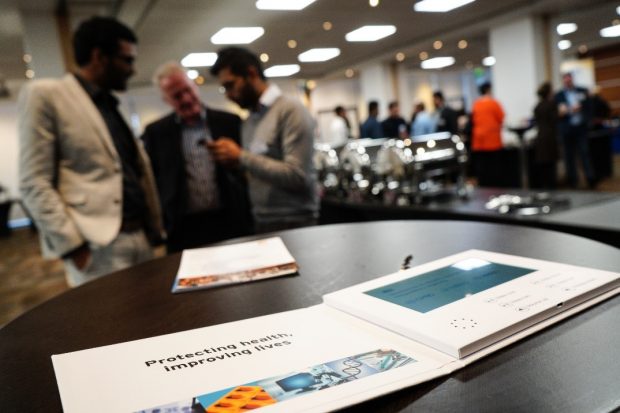
With the 9 February 2019 deadline for implementing the ‘Safety Features’ element of the Falsified Medicines Directive rapidly approaching, this was an ideal opportunity for Tracy Moore (Senior GMDP Inspector and Operations Manager) to recap the requirements, and the recent consultation on the steps required for the UK to meet its obligations to transpose these provisions into UK law, and to review progress to date in implementing the European and National Medicines Verification Organisations (EMVO and SecurMed) and systems. Tracy had also visited one of the UK pilot sites to produce a video showing the system in action. The video provided an excellent overview of the various steps in setting up both the system and the business processes to be ready for the new requirements.
This led into a panel session, chaired by Kevin Bailey (GMDP Inspector), to further discuss the Falsified Medicines Directive. During Richard’s welcome session at the start of the day, delegates had used interactive technology to vote for which topics they would most like to see the panel discuss. Kevin led the panel members through the most popular topics, inviting them to share their various perspectives. I would like to take this opportunity to thank Jerome Bertin from SecurMed, Paul Fleming from the British Generic Manufacturers Association (BGMA) and Rick Greville from the Association of the British Pharmaceutical Industry (ABPI) who kindly gave up their time to join Tracy Moore on the panel.
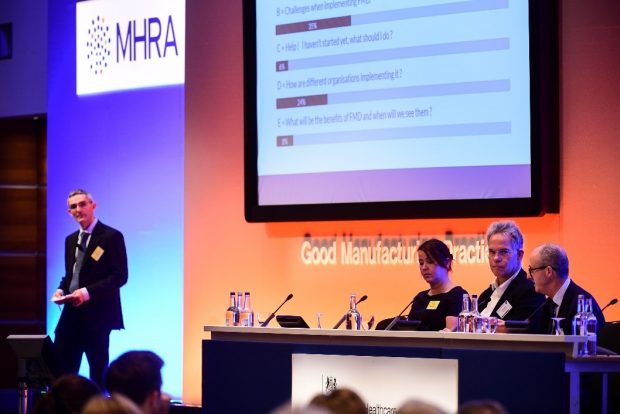
Following the success of last year’s ‘Lunch and Learn’ videos, a similar approach was adopted to share topics of specific interest. This year, instead of video interviews, the presentations took the form of narrated slideshows, which were repeated on a loop during the lunch break, as follows:
Kevin Page (Senior GMDP Inspector) delivered a presentation covering current themes from inspections of advanced therapy medicinal product (ATMP) manufacture. Significant issues include quality management system weaknesses (especially in the area of change control) and poor systems for assessing and responding to environmental monitoring risks. On the positive side, Kevin noted improvements aiming to close the manufacturing process using modern technology, reducing the number of open manipulations and aseptic connections.
Philip Rose (GMDP Inspector) delivered a presentation on Patient Specific Medicines. This exciting area of development in the industry spans ‘specials’, ATMPs, companion diagnostics/medicines, 3D printing of tablets and more. Phil’s presentation gave a brief summary of the support for innovation that the MHRA provides.
Ewan Norton (Senior GMDP Inspector) delivered a presentation on Elemental Impurities, discussing the requirements introduced in ICH Q3D and required for all products since December 2017. Ewan gave an overview of the document, described the expected risk assessment process, and the steps to be taken to manage changes that could affect the risk profile.
Finally, Ana Boban (GMDP Inspector) delivered a presentation on GMP and Marketing Authorisation Holders (MAHs). Ana explained that although GMP is for manufacturers, the ultimate responsibility for the performance of a medicinal product over its lifetime - including its safety, quality and efficacy - lies with the MAH. Ana gave an overview of the responsibilities placed on MAHs in EU GMP, discussed some example deficiencies, and gave some information on the plans for an EMA reflection paper on GMP and MAHs.
The event resumed for the afternoon with a short Q&A session with a panel of inspectors. Delegates had been able to submit questions using the interactive technology, review questions that had been submitted by others and vote for those that they most wanted to see answered. Due to the popularity of the Q&A sessions in feedback from previous GMP symposia, we decided to offer two separate sessions in the agenda. This allowed us to group the questions around topics already covered in presentations and provide further guidance and clarification, as well as answering more general questions.
The first presentation of the afternoon was delivered by David Churchward (Expert GMDP Inspector) on the application of current GMP to new technology. David started by asking the question ‘why innovate?’ Using everyday examples, such as telephones, trains and even the symposium’s own interactive technology, David highlighted the benefits of innovation. He also reviewed the regulatory position on innovation, making it clear that innovation is an expectation of the regulators. Regulations are not intended to be a barrier to innovation and are written to allow flexible implementation.
Application of current GMP to new technologies
Summary:
Regulation not a significant barrier to innovation
- innovations may not be described in guidance
- alternative approaches can be acceptable
- opportunities for ‘regulatory science’
Not a ‘one size fits all’ – control strategy is critical to success
- Many different possible approaches
Times change, principles don’t
David went on to review several examples of innovative approaches, such as:
- continuous manufacturing
- products with extremely short shelf lives
- localised manufacturing
The importance of developing a control strategy was emphasised, clearly defining the required outcomes, process design, validation, monitoring and quality system oversight. David then explored a detailed case study, looking at an innovative approach to simultaneous ‘just-in-time’ packaging of multiple investigational medicinal products (IMPs) on the same packing line.
Next, Andrew Hopkins (Expert GMDP Inspector) delivered a session providing an update following Annex 1 (Sterile Medicinal Products) public consultation. The consultation document had been published soon after the last GMP symposium and, as chair of the Annex 1 drafting group, Andrew described the process followed since last year, provided feedback on comments received and discussed the next steps towards publication.
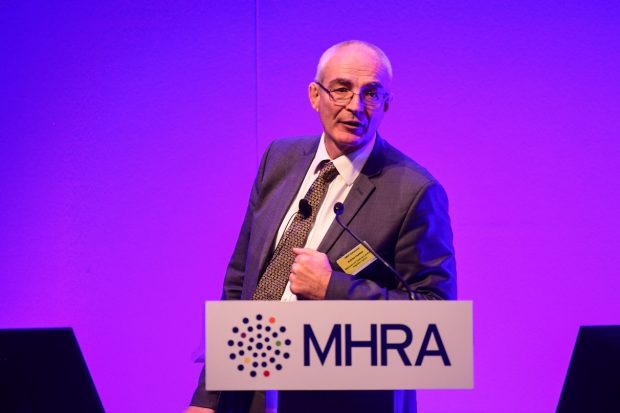
It was time for another refreshment and networking break. During this and other breaks there was an opportunity to talk to exhibitors from various industry and professional bodies, as well as the publishers of the British Pharmacopeia and MHRA Orange and Green guides.
MHRA inspectors were also hosting a recruitment stand to provide information to delegates about vacancies within the team for GMDP inspectors and a new role of Healthcare Inspector. Recruitment for these roles has now closed but our recruitment page shows all current agency vacancies.
The final presentation of the day was delivered by Trevor Watson (GMDP Inspector) on the topic of Importation. Trevor began by reminding the audience of the various definitions of importation and the licensing, testing and certification requirements for products entering the UK. Trevor also clarified some more specialist cases, such as ‘introduction’ and importation for analytical testing only. With the groundwork laid, Trevor went on to explore different importation models and the documentation used to support importation. The session finished with a summary of the regulatory requirements, as well as recent and future regulatory developments affecting this area. This included the proposal from the Pharmaceutical Inspection Co-operation Scheme (PIC/S) to introduce their own version of Annex 16, as well as an update on progress towards introducing EU GMP Annex 21 on importation.
A second Q&A panel session explored further areas of interest. Although not all delegates’ questions could be answered during the event, the inspectorate will provide written responses to all questions, which will be made available to delegates alongside the event resources within the next few months.
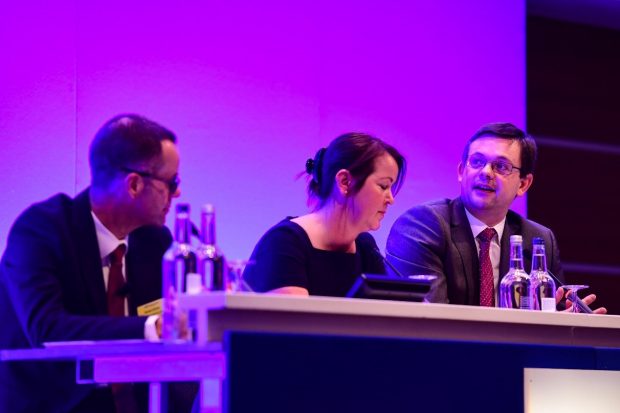
The event was drawn to a close by Richard Andrews who reminded delegates of the key themes of the day and offered thanks to the delegates, speakers and various support teams who make the event possible.
We hope the event proved useful for delegates during a time of significant change and uncertainty. The resources pages of the GMDP symposium website have now been updated to include all presentation content. As ever, we are keen to continue evolving the format and content of the symposium to enhance stakeholder engagement, so we will be reviewing the evaluation survey completed by delegates after the event and looking for areas to improve.
As always, we are also happy to receive comments in response to this blog post to help us plan for next year’s event.
Don’t miss the next post, sign up to be notified by email when a new post comes out


1 comment
Comment by Hussain posted on
Very long blog and should be published shortly after the event